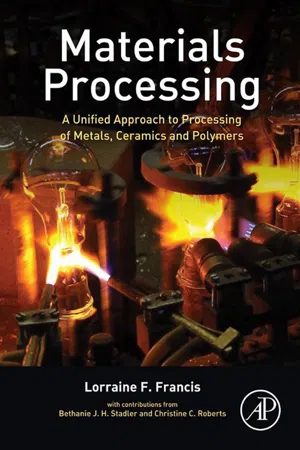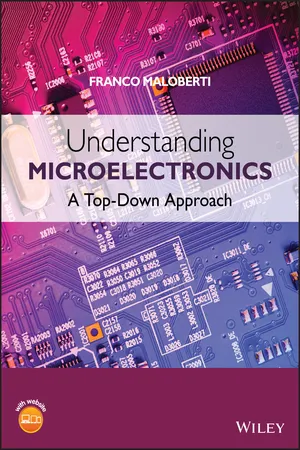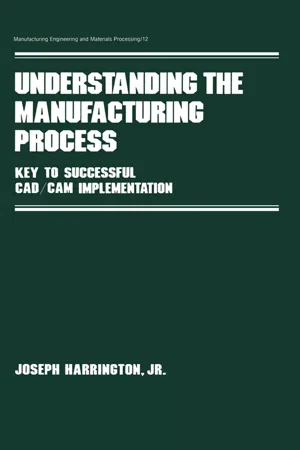Technology & Engineering
Processing
Processing refers to the manipulation, transformation, or analysis of data, signals, or materials using technology or machinery. In the context of technology and engineering, processing often involves converting raw inputs into usable outputs through various methods such as computation, manufacturing, or refining. This can include tasks like data processing, signal processing, or material processing.
Written by Perlego with AI-assistance
Related key terms
Related key terms
1 of 4
Related key terms
1 of 3
4 Key excerpts on "Processing"
- eBook - ePub
Materials Processing
A Unified Approach to Processing of Metals, Ceramics and Polymers
- Lorraine F. Francis(Author)
- 2015(Publication Date)
- Academic Press(Publisher)
Chapter 1Introduction to Materials Processing
Abstract
This chapter defines the field of materials Processing and the scope of the text overall. Materials Processing is the series of steps that converts a starting material into a useful form with controlled structural features and properties. The importance of materials Processing to the discipline of materials science and engineering is described. Three approaches to materials Processing are introduced: forming processes (creating shapes using dies, molds and forces), additive processes (creating shapes layer-by-layer using a computer file containing the details of the part shape), and subtractive processes (removing material from a block to leave behind the shape of interest). The chapters and the book focus on forming and additive processes. Examples of these approaches across metals, ceramics, and polymers are given.Keywords
Materials Processing; materials science and engineering; forming processes; additive manufacturing1.1 Materials Processing: Definition and Scope
Materials Processing is used to create all the manmade items that we know from everyday life. Products ranging from simple items, such as plastic wrap and paper clips, to complex multipart designs, such as automotive engines and electronic devices, are made by the same general sequence of events. Ultimately, the materials in these items originate from the earth and its resources. As shown in Figure 1.1 , raw materials from the earth are converted, by mechanical, chemical, and thermal processes, to more refined starting materials . These starting materials are then processed into useful products. For example, mineral ores are mined from the earth; metals are then extracted from the ores and processed further to make metal alloys in standard forms, such as slabs, which can be converted into products or components. Likewise, ceramics originate from ores, which are mined and then refined into chemicals and ceramic powders, the starting materials for the creation of ceramic objects. Polymers also follow a similar sequence, often originating from oil. Oil is refined to a monomer (e.g., ethylene), processed into a polymer starting material (e.g., polyethylene pellets), and eventually converted into a polymer part. The initial steps in this complex series of events (i.e., mining and refining of raw materials) are of interest to materials scientists and engineers, but are the primary domain of mining engineers and chemical engineers. Materials engineers are more concerned with the latter steps of synthesizing and formulating the starting materials, especially Processing them into useful products. The operations that fit into the box labeled Materials Processing - eBook - ePub
- Andrew Greasley(Author)
- 2019(Publication Date)
- Routledge(Publisher)
6Process technologyProcess technology is an important aspect of operations in that it has led to a large growth in productivity in both manufacturing, where the emphasis is on technology for material and information transformation, and services, where the emphasis is on technology for information and customer transformations. Process technology can be used to enhance performance along performance objectives such as improving delivery speed and increasing quality.Process technology for materials
This section will describe some of the software systems and hardware technologies that have had a widespread impact on manufacturing firms.Software systems
Computer-aided design (CAD) is one of the most widespread technologies, used in even relatively small firms. A CAD system allows the designer to create drawings on a computer screen to assist in the visual design of a product or service. The drawings can be viewed from any angle, and drawings can be zoomed in to allow users to inspect a design in detail. Drawings are held in a database for future use and dissemination between designers and engineers all across the company. Computer-aided process planning (CAPP) extends CAD by transmitting a process plan of how parts will be manufactured to the machine tool – for example, deciding on how individual pieces are to be cut from a sheet of metal. CAPP systems can also sequence parts through a number of process steps. Computer-aided engineering (CAE) takes the drawings in a CAD system and subjects the designs to simulated tests. For example, the behaviour of an engineering design for elements of a bridge can be observed under various amounts of stress. This allows various design options to be tested quickly and cheaply.Hardware technologies
Computer numerically controlled (CNC) machines are machine tools that can be controlled by computer. Automated material handling systems (AMH) are designed to improve efficiency in the movement, storage and retrieval of materials. Types of systems include automated guided vehicle (AGV) systems that transport material on driverless vehicles to various locations in the plant. Automated storage and retrieval systems (AS/RS) handle the storage and retrieval of materials by using computers to direct automatic loaders to pick and place items in a storage facility. Flexible manufacturing cell (FMC) systems integrate individual items of automation described earlier to form an automated manufacturing system. Flexible manufacturing systems (FMS) extend the facilities of an FMC by incorporating automatic parts loading and unloading facilities and an AGV system for parts movement. When these technologies are integrated by using a computer network and database system, the resulting automated system is called computer-integrated manufacture (CIM). CIM is a fully integrated system: the areas of design, testing, fabrication, assembly, inspection and material handling are automated and integrated by using technology. Autonomous robots can learn, adapt, and evolve by using capabilities like machine learning and computer vision. For example, robots equipped with gyroscopes and accelerometers, along with an on-board camera and laser scanner can tell how and where they are moving, and they ‘know’ what tasks they are capable of covering. The robots can then autonomously evaluate a task, divide it between themselves and collaborate to complete it. For example, when an individual robot reaches the end of its battery charge, it will transmit its position to a fully charged unit that can take over while it recharges. - eBook - ePub
Understanding Microelectronics
A Top-Down Approach
- Franco Maloberti(Author)
- 2011(Publication Date)
- Wiley(Publisher)
CHAPTER 4 SIGNAL ProcessingSignals generated by sensors, received by aerials, or fetched from storing media often need to have some of their features changed for optimum use. This modification, performed by electronic circuits, is what we call signal Processing. This chapter studies different types of Processing and analyzes tools for doing it. We shall distinguish between linear and non-linear, analog and digital Processing. Moreover, we shall study how to estimate responses, we shall learn analysis methods for linear Processing, and we shall discuss filtering in the frequency and the z -domain.4.1 WHAT IS SIGNAL Processing?Processing, in common language, is the blending of ingredients to obtain a particular end. The results, desirably, have better features than the initial ingredients. A set of Processing operations constitutes the “recipe” of the transformation. Since the “ingredients” of electronic circuits are signals, the input(s) and output(s) of electronic processors are signals as well. They can be voltages, currents, or, perhaps, variable resistances or tunable capacitances. The set of operations that change input signals into outputs are the equivalent of a recipe.Figure 4.1 (a) shows the generic block diagram of a signal processor. It has a number of inputs (say n ) and of outputs (say m ). The block of Figure 4.1 (a) establishes a relationship between inputs and outputs given by the concise equationFigure 4.1 (a) Generic signal processor; (b) hierarchical representation.(4.1)where H is the Processing “recipe.” The outputs correspond to the unknown element of a mathematical problem, because, for given input variables, X , the solution of (4.1) determines the unknown output variables, Y .Figure 4.1 (a) depicts Processing as a “black box” because operations are performed inside the block without disclosing details. However, the Processing function Y - eBook - ePub
Understanding the Manufacturing Process
Key to Successful Cad/cam Implementation
- Joseph Harrington Jr.(Author)
- 2020(Publication Date)
- CRC Press(Publisher)
A fundamental precept of this book has been the concept that all the facets of manufacturing can be expressed in terms of data generation, transformation, and transmission. All of the alphabetic and numeric forms of data can easily be handled in digital electronic data Processing equipment. So too can the geometric forms encountered in manufacturing.Data must be manipulated both in the operations involved in manufacturing, and in the management of those operations. Data move freely back and forth between these two planes of activity.Information may be transmitted orally, in written form, and in electronic signals within a computer. The latter presents many advantages to the management of a manufacturing enterprise. There are certain virtures to computer data Processing: Data are stored in one place only, the place where it is generated. Data may move instantly to wherever they are needed, in their most up-to-date form. When needed, they may be presented in their most useful format.Understanding of manufacturing as a science, and the ability to bring to bear upon manufacturing information handling the power of modern computers, will enhance productivity and assure the attainment of corporate objectives.
Index pages curate the most relevant extracts from our library of academic textbooks. They’ve been created using an in-house natural language model (NLM), each adding context and meaning to key research topics.
Explore more topic indexes
Explore more topic indexes
1 of 6
Explore more topic indexes
1 of 4



